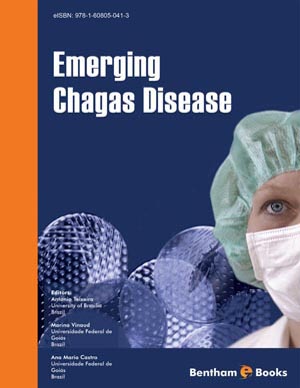Abstract
What happens to a person infected with the parasite Trypanosoma cruzi? The answer to this question is essential to the formulation of new ideas throughout the reading of this chapter, as over two thirds of individuals who acquired the infection will never present any clinic manifestation related to Chagas disease. Only 5% or less of acute infected individuals will present symptoms such as fever, generalized joint and muscle pain, indisposition, headache and other unspecific symptoms of a common cold. The other 95% patients are asymptomatic or do not report symptoms that allow the healthcare professional to suspect and/or confirm the acute phase diagnosis of Chagas disease. After three to six months, the patients get to the intermediary phase of the chronic infection in the absence of signs or symptoms. However, three or more decades later, circa of one third of the infected individuals may present chronic Chagas disease symptoms. It is known that 94.5% of chronic chagasic patients will present manifestations of heart disease and the remaining 5.5% will present esophagus disease (megaesophagus) or large intestine manifestations (megacolon).






















